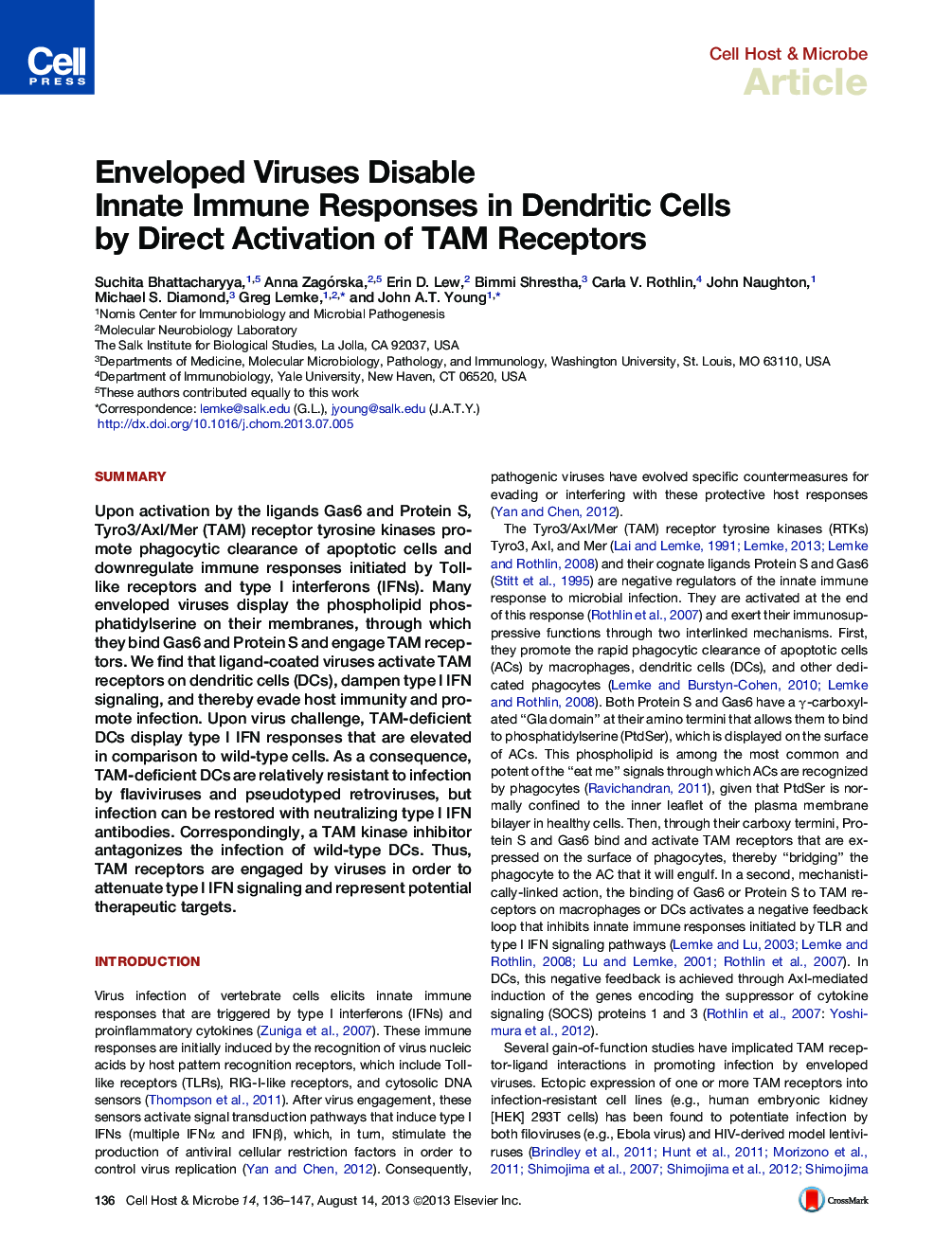| Article ID | Journal | Published Year | Pages | File Type |
|---|---|---|---|---|
| 4361040 | Cell Host & Microbe | 2013 | 12 Pages |
•Enveloped viruses bind TAM receptor ligands via phosphatidylserine•Viruses strongly activate TAM receptors in DCs•Activated TAM receptors inhibit IFN signaling•Pharmacological inhibition of TAM receptors inhibits virus replication
SummaryUpon activation by the ligands Gas6 and Protein S, Tyro3/Axl/Mer (TAM) receptor tyrosine kinases promote phagocytic clearance of apoptotic cells and downregulate immune responses initiated by Toll-like receptors and type I interferons (IFNs). Many enveloped viruses display the phospholipid phosphatidylserine on their membranes, through which they bind Gas6 and Protein S and engage TAM receptors. We find that ligand-coated viruses activate TAM receptors on dendritic cells (DCs), dampen type I IFN signaling, and thereby evade host immunity and promote infection. Upon virus challenge, TAM-deficient DCs display type I IFN responses that are elevated in comparison to wild-type cells. As a consequence, TAM-deficient DCs are relatively resistant to infection by flaviviruses and pseudotyped retroviruses, but infection can be restored with neutralizing type I IFN antibodies. Correspondingly, a TAM kinase inhibitor antagonizes the infection of wild-type DCs. Thus, TAM receptors are engaged by viruses in order to attenuate type I IFN signaling and represent potential therapeutic targets.
